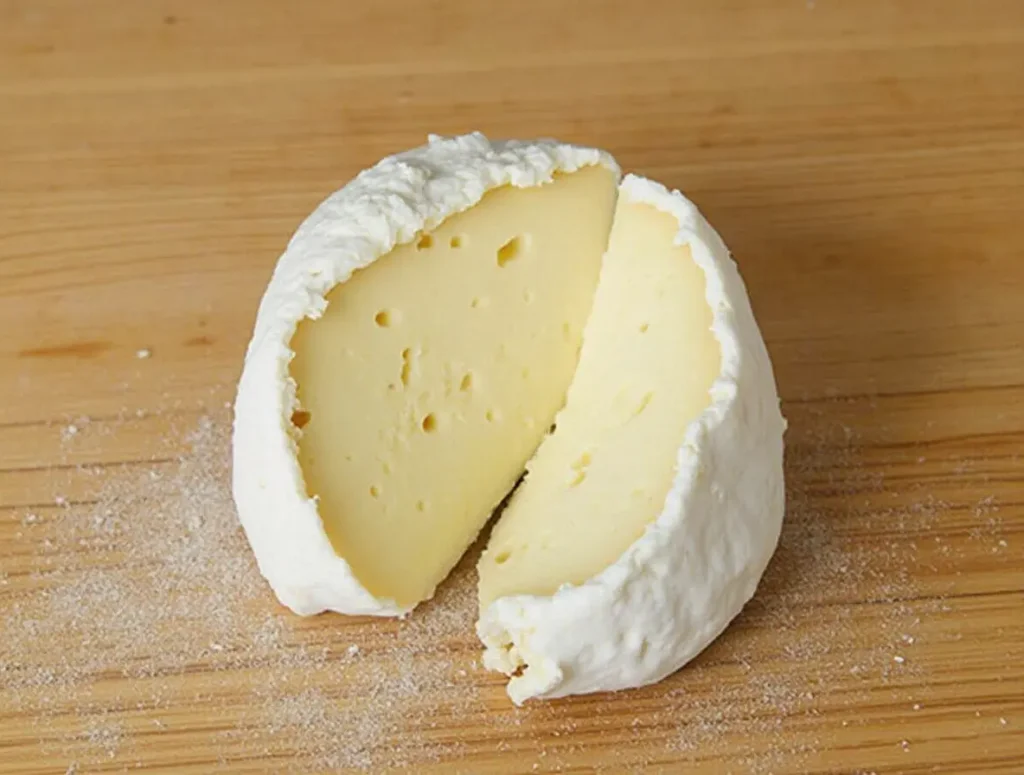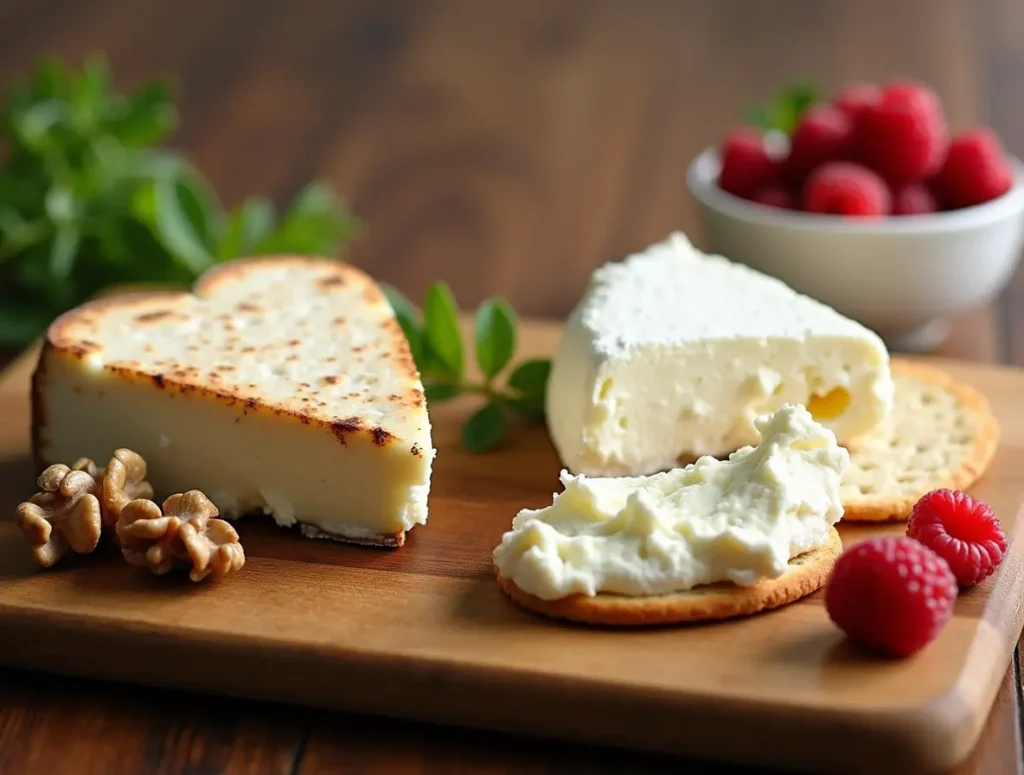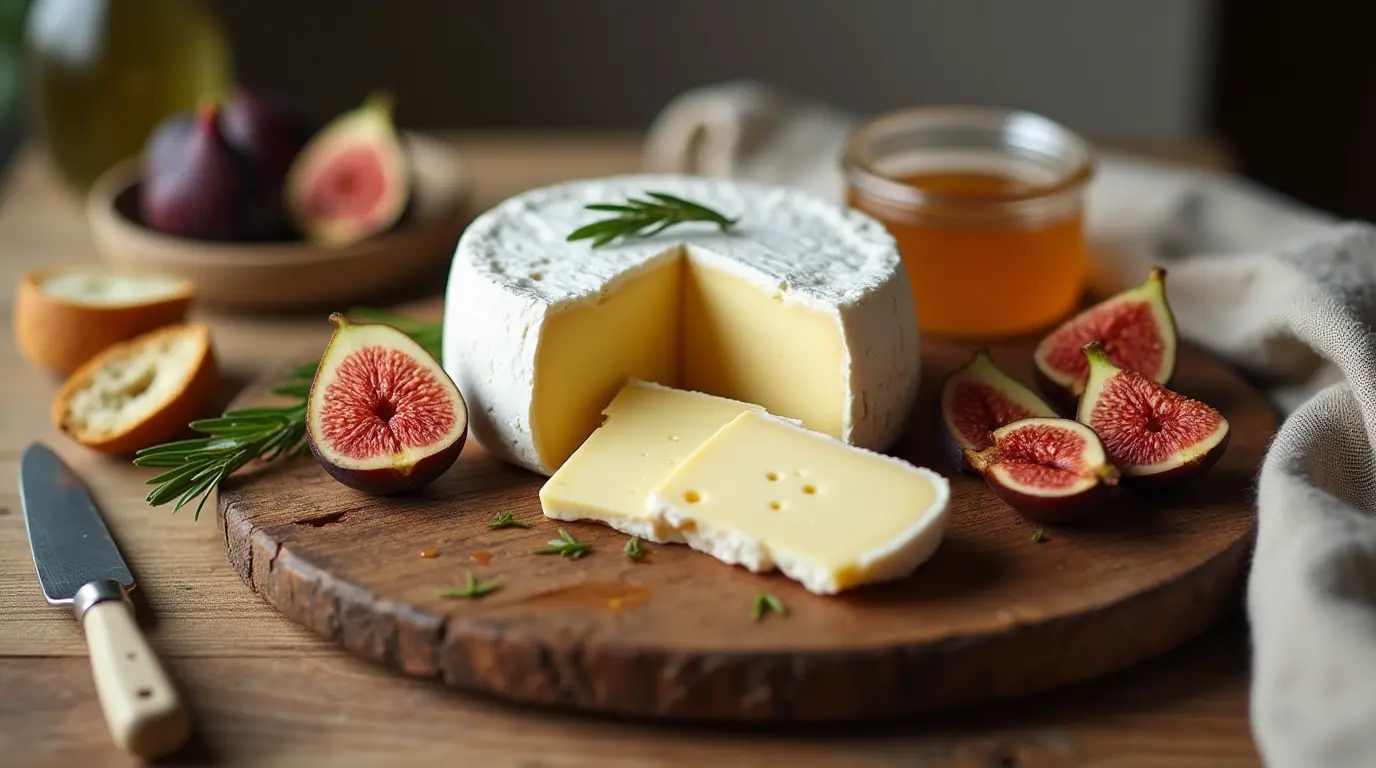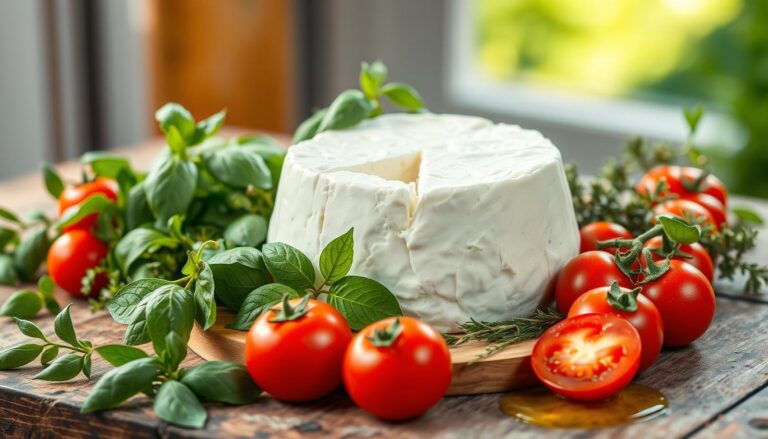Neufchatel Cheese: From History to Your Healthy Kitchen
Have you ever tasted cheese so unique it feels like a secret waiting to be shared? Meet Neufchâtel cheese, a French classic beloved for its distinct flavor, creamy texture, and surprising versatility. Whether you’re a cheese enthusiast, a food blogger scouting new trends, or on the lookout for healthy, delicious options, this blog has something for you.
From its rich history to its nutritional benefits and culinary uses, this is your ultimate guide to Neufchâtel cheese. By the end, you’ll not only understand what makes it so special but also feel inspired to try it in your next recipe. Let’s dig in!
Table of Contents
What is Neufchâtel Cheese?
A Brief History
Neufchâtel cheese traces its roots back to Normandy, France, and is considered one of the country’s oldest cheeses, dating back to at least the 6th century. According to legend, the cheese was shaped into hearts by young women during the Hundred Years’ War, offering it as a token of affection to soldiers. Today, this heart-shaped variety remains a hallmark of the cheese.
One of the lesser-known gems of the cheese world, Neufchâtel stands out for its recognizable soft, creamy texture and mildly tangy flavor. While the traditional French version is aged and has a slightly grainy texture, the American version is notably smoother.

What Sets Neufchâtel Apart from Cream Cheese?
Neufchâtel is often compared to cream cheese due to their similar appearance and consistency. However, there’s a key difference—Neufchâtel contains less fat, making it a lighter and healthier option. While cream cheese has about 33% milk fat, Neufchâtel typically has around 23%. Perfect for spreading, baking, or snacking, it’s a versatile cheese you’ll want in your fridge.
Why Choose Neufchâtel? The Nutritional Benefits
If healthy yet indulgent food is your thing, Neufchâtel cheese is a stellar choice. Here’s why:
Here’s a table showcasing the nutritional benefits of Neufchâtel cheese per a standard serving (about 1 ounce or 28 grams):
| Nutrient | Amount per 1 oz (28g) | Benefits |
|---|---|---|
| Calories | 70-80 | Provides energy without being overly calorie-dense. |
| Protein | 2-3 g | Supports muscle growth and repair. |
| Fat | 6-7 g | Includes healthy fats for energy and nutrient absorption. |
| Saturated Fat | 3-4 g | Aids in brain and cell function when consumed in moderation. |
| Cholesterol | 20-25 mg | Moderate levels; supports hormone production in the body. |
| Carbohydrates | <1 g | Minimal carbs, making it keto-friendly. |
| Calcium | 20-30 mg | Strengthens bones and teeth; supports nerve and muscle function. |
| Sodium | 90-100 mg | Enhances flavor and helps maintain fluid balance in the body. |
| Vitamin A | 4-5% of daily value | Promotes healthy vision, skin, and immune function. |
| Phosphorus | 10-15 mg | Supports bone health and energy metabolism. |
Note: Nutritional values may vary slightly depending on the brand or whether the cheese is traditional or made with reduced fat. Neufchâtel cheese is a lighter alternative to cream cheese, making it ideal for those seeking reduced fat content without compromising on creamy texture and taste.
A Low-Fat Alternative
Neufchâtel is an excellent substitution for cream cheese when you’re looking to cut back on fat without sacrificing flavor or creaminess. Spread it on bagels, mix it into dips, or use it in desserts—all with fewer calories.
Rich in Calcium
Just one serving of Neufchâtel delivers a healthy dose of calcium, a crucial mineral for maintaining strong bones and teeth. According to Nutritionist Jane Smith, “Neufchâtel cheese provides a lower-fat cheese option that still supports bone health. It’s perfect for those following a balanced diet.”
Whether you’re pairing it with fruit for a healthy snack or incorporating it into a calcium-rich breakfast, Neufchâtel is a cheese you can feel good about eating.
Cooking with Neufchâtel Cheese
Here’s where the fun begins—cooking with Neufchâtel opens up a delicious world of possibilities. From sweet to savory dishes, this versatile cheese does it all!

Savory Recipes
- Creamy Pasta Sauce: Whisk Neufchâtel into hot pasta for a creamy, guilt-free sauce. Add garlic, lemon zest, and roasted veggies for a quick yet impressive dish.
- Cheese-Stuffed Chicken Breasts: Use Neufchâtel as a filling for chicken breasts. Combine it with spinach and herbs, and bake until perfectly golden.
- Savory Bagel Spread: Mix Neufchâtel with chopped dill, smoked salmon, and capers for a delectable spread.
Sweet Treats
- Cheesecake: Replace cream cheese with Neufchâtel in your favorite cheesecake recipe for a lighter but equally rich dessert.
- Frosting for Cakes and Cupcakes: Make a tangy, lower-calorie cream cheese frosting.
- Fruit Dip: Whip Neufchâtel with honey and cinnamon for a delicious dip.
According to Chef Laura Bennett, “Neufchâtel cheese’s light yet creamy consistency makes it a dream ingredient for both savory and sweet dishes. It’s incredibly adaptable!”
Feeling inspired? You’ll love experimenting with this cheese in your own kitchen.
Regional Variations and Production Methods
French vs. American Neufchâtel

While both are delicious, French and American versions differ in texture and flavor. Traditional French Neufchâtel is aged longer, giving it a firmer, slightly crumbly texture and a nutty, mushroom-like flavor. Meanwhile, American Neufchâtel is smoother, creamier, and mildly tangy—closer to cream cheese.
Traditional vs. Modern Techniques
Historically, Neufchâtel was handcrafted in cottages using raw cow’s milk and aged in cool cellars. Today, modern methods use pasteurized milk for broader safety and appeal. Despite these changes, many small producers in Normandy still use traditional methods to create authentic French Neufchâtel.
“True Neufchâtel cheese carries with it the heritage and craft of Normandy,” says Pierre André, a third-generation cheesemaker. “It’s not just a cheese; it’s a piece of history.”
How to Select and Store Neufchâtel Cheese
Selecting the Best Neufchâtel
- Look for Freshness: The cheese should have a slight sheen and a creamy, soft texture without any off-putting smells.
- Watch the Label: Authentic French Neufchâtel often comes with a Protected Designation of Origin (PDO) label, ensuring it meets rigorous standards.
- Buy Locally: Visit local cheese shops or farmers’ markets to find high-quality Neufchâtel, whether French or American.
Storing Neufchâtel
- Refrigerate it in an airtight container to maintain freshness.
- Avoid freezing, as it can alter the cheese’s texture.
- Consume within 10-14 days of opening for the best flavor and texture.
Proper storage ensures you’ll savor every last bite of this delightful cheese!
Neufchâtel Cheese in Popular Culture
While it may not be as famous as brie or camembert, Neufchâtel has a loyal following among culinary enthusiasts. It often takes center stage in gourmet recipes and has made its way into food blogs and YouTube cooking tutorials.
Its role as a healthier cream cheese alternative has also earned it a spot in modern cooking, particularly among the health-conscious crowd. From artisanal bakeries to Instagram food trends, Neufchâtel is quietly having a moment!
Discover the Joy of Neufchâtel Cheese Today
From its rich history in the hills of Normandy to its lighter, American-style counterpart, Neufchâtel cheese is the perfect mix of tradition and innovation. It’s healthy, versatile, and delicious—whether you’re spreading it on toast or crafting a show-stopping cheesecake.
Why not give it a try? Discover your own favorite ways to use this delightful cheese and share your creations with the cheese-loving community. Explore more tips, recipes, and healthy cheese alternatives right here on our blog!
Happy cooking and even happier eating!
FAQ About Neufchâtel Cheese
Q: What makes Neufchâtel cheese different from cream cheese?
A: Neufchâtel cheese has a slightly lower fat content compared to cream cheese, giving it a lighter texture and milder flavor. It’s also typically made with milk and less cream, making it a healthier option without sacrificing creaminess.
Q: Can Neufchâtel cheese be used as a substitute for cream cheese in recipes?
A: Absolutely! Neufchâtel cheese works wonderfully in most recipes that call for cream cheese. Whether you’re whipping up a cheesecake, frosting, or a savory dip, it delivers a similar creamy texture with a touch of tang.
Q: Is Neufchâtel cheese suitable for people with lactose intolerance?
A: While Neufchâtel cheese is lower in fat, it still contains lactose. If you’re sensitive, you may want to try lactose-free alternatives. Always check the packaging or consult with your healthcare provider if you’re unsure.
Q: How should I store Neufchâtel cheese?
A: To keep your Neufchâtel cheese fresh, store it in its original packaging in the refrigerator. Once opened, wrap it tightly in plastic wrap or transfer it to an airtight container and use it within a week for the best flavor.
Q: Are there any special recipes that highlight the unique taste of Neufchâtel cheese?
A: Yes! From creamy soup bases to rich spreads and decadent desserts, Neufchâtel cheese shines in a variety of dishes. Check out our recipe section for creative ways to incorporate its delicious taste into your meals!







